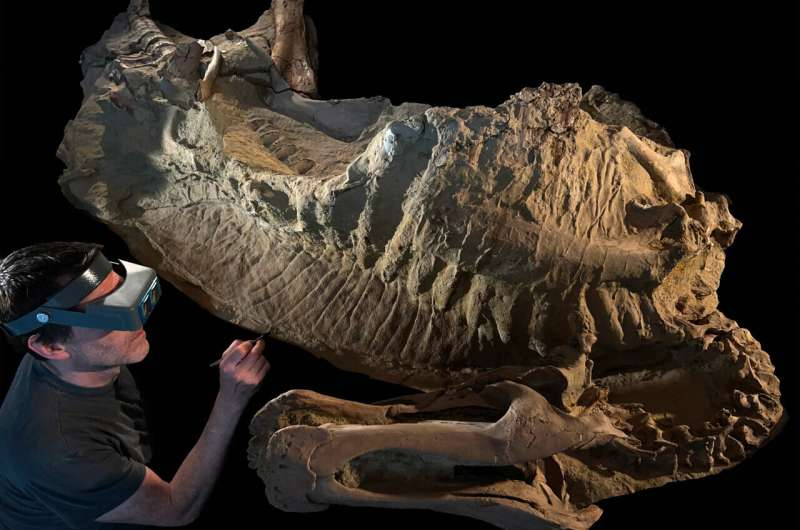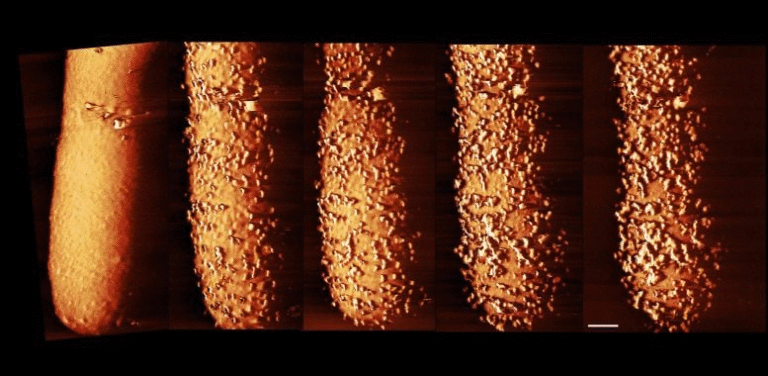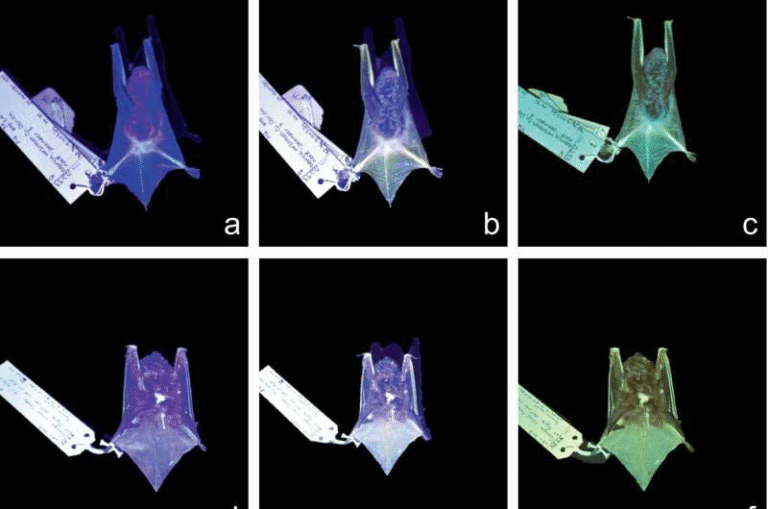Dinosaur “Mummies” Reveal the Real Look of a 66-Million-Year-Old Duck-Billed Giant

Scientists from the University of Chicago have made one of the most revealing paleontological discoveries in years — two remarkably preserved “dinosaur mummies” of the duck-billed dinosaur Edmontosaurus annectens, found in the badlands of east-central Wyoming. These fossils have given researchers an almost complete view of what these enormous animals looked like in real life — from their scales and skin texture to a fleshy crest running along the back and even hooves on their hind feet.
The Discovery Site: Wyoming’s “Mummy Zone”
The fossils were excavated from what paleontologists are now calling a “mummy zone” — a small region in east-central Wyoming that has yielded several dinosaur mummies since the early 1900s. These discoveries were led by Paul Sereno, a professor of Organismal Biology and Anatomy at the University of Chicago, along with a team of paleontologists, fossil preparators, and digital artists.
Using historical photos and field records, the team tracked down the original excavation sites where early mummified hadrosaurs had been found over a century ago. In those same stacked river sands, they uncovered two new Edmontosaurus mummies — one a juvenile about two years old, and the other an early adult.
Both specimens displayed large, continuous patches of preserved external body surface, allowing the team to reconstruct the full anatomy of the animal’s outer appearance — a scientific first for a large dinosaur.
How These “Mummies” Formed: The Clay-Templating Process
The preservation process that created these fossils is unlike anything previously documented. The team describes it as “clay-templating mummification” — a rare and unexpected sequence of geological and biological events.
Here’s what likely happened: after the dinosaurs died around 66 million years ago, their carcasses dried out in the sun, similar to how modern animal remains desiccate in arid environments. Later, flash floods buried them rapidly in fine clay-rich sediments. As the carcasses lay buried, a biofilm (a thin layer of bacteria) formed over their skin. This biofilm attracted charged clay particles from the surrounding wet sediment, causing them to congeal into an ultra-thin clay coating — no thicker than 1/100th of an inch.
This thin clay film acted as a perfect mold of the dinosaur’s outer surface. Once the organic material decayed, the clay template remained, preserving intricate details like wrinkles, scales, and skin folds.
The scientists compared the process to forming a delicate clay mask — one that captured a three-dimensional imprint of the dinosaur’s skin, even though no actual soft tissue survived.
Tools and Techniques Used
Revealing such a fragile layer required extreme precision. Fossil preparator Tyler Keillor spent hours painstakingly exposing the thin clay boundary without destroying it.
The research team employed a range of modern techniques, including:
- CT and micro-CT scanning to visualize internal structures.
- X-ray spectroscopy and clay mineral analysis to study the chemical composition of the thin film.
- 3D surface imaging to reconstruct the external features in fine detail.
- Sediment analysis of the layers surrounding the fossil to understand the environmental conditions during burial.
These combined methods helped confirm that the clay film was indeed the mechanism of preservation and not a simple mineral coating.
What the Fossils Revealed About Edmontosaurus
The two specimens together offered a complete picture of the fleshy profile of Edmontosaurus annectens — something that has long been missing from our understanding of these large herbivorous dinosaurs.
1. The Crest and Spikes
The fossils revealed a fleshy crest that extended along the neck and trunk, continuing into a row of spikes running down the tail. Each spike was aligned with a single vertebra, forming a continuous midline structure. This feature gives Edmontosaurus a much more dynamic appearance than previously imagined.
2. Skin and Scale Patterns
The dinosaur’s skin was covered in tiny pebble-like scales ranging from 1 to 4 millimeters across, with larger polygonal scales on the lower body and tail. These textures were so well preserved that researchers could see wrinkles over the ribcage, suggesting that the skin was thin and flexible, not thick and leathery as once assumed.
3. The Hooves
Perhaps the most surprising finding was the presence of hooves — the first ever confirmed in a dinosaur. Each of the three hind toes was capped with a wedge-shaped hoof that had a flat underside, similar to those of modern horses.
CT scans and 3D reconstructions allowed the researchers to fit these fossilized feet into actual Edmontosaurus footprints from the same era, confirming the match. The hind feet also had a fleshy heel pad behind the hooves, while the forefeet showed smaller hoof-like coverings on the tips.
This discovery makes Edmontosaurus the earliest known hooved land vertebrate, and the first reptile ever found with true hooves. It’s also the first known four-legged animal where the forelimbs and hindlimbs had different postures — the front legs more upright, the hind legs more spread, suggesting a versatile walking style.
Significance of the Discovery
This study represents the most complete reconstruction of a large dinosaur’s external body to date. Until now, artists and scientists relied heavily on skeletal structure and speculation to depict dinosaurs’ appearance. With these mummified specimens, researchers now have concrete data on how a massive herbivore like Edmontosaurus actually looked.
The discovery also changes how scientists view dinosaur evolution. The presence of hooves suggests that hadrosaurs may have evolved specialized limb adaptations for stability and movement on different terrains, similar to how mammals evolved hooves independently.
In addition, the clay-templating model gives paleontologists a new preservation framework to test on other fossils. It provides both a methodological toolkit — combining imaging, sediment analysis, and reconstruction techniques — and a conceptual model explaining how rare “mummified” dinosaurs form in terrestrial settings.
The Broader Picture: Why Edmontosaurus Matters
Edmontosaurus annectens lived about 66 million years ago, near the very end of the Cretaceous Period, just before the mass extinction event that wiped out non-avian dinosaurs. It was a large herbivore, growing up to 40 feet long, with a long, flattened duck-bill used for cropping plants.
It belonged to a group known as hadrosaurs, some of the most successful herbivorous dinosaurs of their time. Fossils of Edmontosaurus have been found across North America, especially in the Hell Creek Formation and Lance Formation, regions known for rich late-Cretaceous fossil deposits.
What makes Edmontosaurus especially interesting is that it likely lived in herds, migrated seasonally, and may have been prey for Tyrannosaurus rex — as suggested by fossil evidence showing healed bite marks.
Now, with these “mummified” fossils, paleontologists can better understand not just how this species lived, but what it truly looked like.
A Rare Window Into Dinosaur Life
This discovery stands out because true dinosaur mummies are extraordinarily rare. Usually, soft tissues decay long before fossilization can occur. In this case, the unique combination of desiccation, biofilm activity, and rapid clay burial created an almost perfect template.
It’s a remarkable example of taphonomy — the science of how organisms decay and become fossilized. The findings show that, under the right conditions, even delicate surface details like scales and skin creases can survive for tens of millions of years — not as organic remains, but as mineral impressions.
What’s Next
The research team plans to search for more specimens in the same Wyoming strata and other similar sites, hoping to find more examples of clay-templated preservation. They also intend to create biomechanical models of Edmontosaurus movement using the newly reconstructed body shape, testing how these dinosaurs walked, ran, and interacted with their environment.
This discovery is expected to inspire future paleontologists to look more closely at fossil sediments — not just bones — in search of similar hidden details that could unlock the true external anatomy of other prehistoric giants.
Research Reference:
Paul C. Sereno et al., “Duck-billed dinosaur fleshy midline and hooves reveal terrestrial clay-template ‘mummification’,” Science (2025). DOI: 10.1126/science.adw3536





